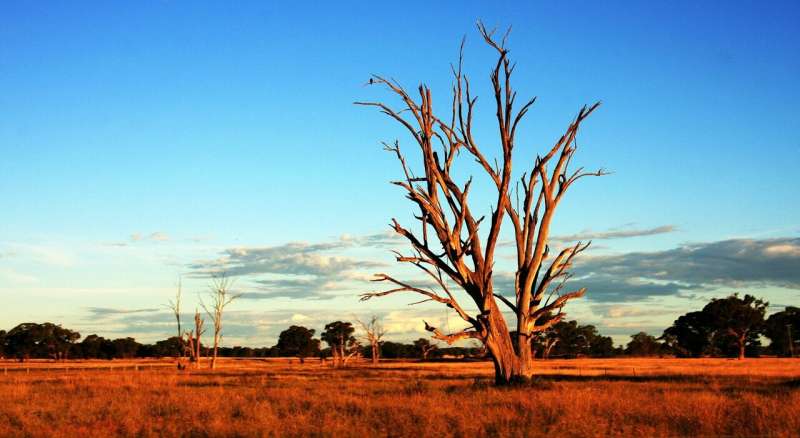Aboriginal people near the Ranger uranium mine suffered more stillbirths and cancer. We don’t know why

The Ranger uranium mine, surrounded by Kakadu National Park in the Northern Territory, operated for 40 years until it closed in 2021. During this time, Aboriginal people in the region experienced stillbirth rates double those of Aboriginal people elsewhere in the Top End, and cancer rates almost 50% higher.
But a NT government investigation couldn’t explain why. And as I write today in the Medical Journal of Australia, we’re still no wiser.
We owe it to Aboriginal people living near mines to understand and overcome what’s making them sick. We need to do this in partnership with Aboriginal community-controlled health organizations. This may require research that goes beyond a biomedical focus to consider the web of socio-cultural and political factors contributing to Aboriginal well-being and sickness.
Investigating the health impacts
Uranium was mined at Ranger from 1981 until 2012. Processing of stockpiled ore continued until 2021. This is despite community opposition when the mine was proposed and during its operation.
Over the life of the mine, there have been more than 200 documented incidents. Diesel and acid spills have contaminated creeks and drinking water.
The Gundjeihmi Aboriginal Corporation represents the Mirarr people of the region. For decades it has expressed grave concerns about continuing incidents and the lack of an effective government response.
When Ranger’s operators proposed expanding the mine in 2014, opponents pointed to suggestions of higher rates of stillbirth and cancer among Aboriginal people living nearby.
The NT health department then set up an investigation. Investigators began by identifying all Aboriginal people who had spent more than half their lives near the mine between 1991 and 2014. These people were compared with all other Aboriginal people in the Top End.
The investigators considered the worst-case scenario would be if Aboriginal people were exposed to radiation from the mine contaminating bush food, water or air, and this exposure increased stillbirth and cancer rates.
Investigators also looked at smoking tobacco, drinking alcohol and poor diet as possible contributing causes.
Here’s what they found
Investigators found the rate of stillbirth was 2.17 times higher among Aboriginal women near the mine. Radiation can lead to stillbirth by causing congenital malformations, and some other risk factors for stillbirth appeared more common amongst women near the mine. However the investigation found neither radiation nor other risk factors explained the higher rate of stillbirth.
The rate of cancer overall was 1.48 times higher among Aboriginal people near the mine than elsewhere in the Top End. No rates of single cancers were significantly higher.
Cancers of the lip, mouth and throat together were the most common cancers. These cancers covered 42% of the excess cancers among people near the mine. The investigators were confident these cancers were not related to radiation from the mine, based on international evidence. The Ranger mine investigation concluded radiation did not contribute to the higher cancer rates.
However, cancers of the lip, mouth and throat are associated with smoking and drinking alcohol. Health records showed smoking, drinking alcohol and a poor diet were more common among Aboriginal people near the mine. Yet the rates of cancer among people near the mine who smoked, drank alcohol or reported poor diet were no higher than the rates of cancer among other Aboriginal people in the Top End who smoked, drank alcohol or reported a poor diet.
So the investigation concluded neither radiation, smoking, alcohol nor poor diet explained why Aboriginal people near the mine had higher rates of stillbirths and cancer.
The NT government concluded its investigation by recommending initiatives to reduce smoking and drinking alcohol by Aboriginal people near the mine.
Investigating disease clusters can be hard
When a cluster of people with a particular disease is identified, affected communities seek an explanation. However studies of disease clusters rarely explain exactly why the cluster has occurred. Some diseases, such as cancer, have complex origins that may have been experienced decades before the cancer is diagnosed.
Worldwide, communities exposed to ionizing radiation from mining are often also exposed to dust, diesel, noise and trauma. They also have higher rates of smoking and drinking alcohol.
So, it is understandable the investigation into stillbirths and cancers among Aboriginal people near Ranger uranium mine was inconclusive.
Where to next?
While the NT government recommendations appear to show concern for Aboriginal health, they ignore the importance of Aboriginal people’s rights, empowerment and self-determination as contributors to health and well-being.
The development of the Ranger mine brought Aboriginal communities royalty money and alcohol. It also contributed to loss of traditional livelihoods, dependency and despair.
Inequality has also increased among Aboriginal people near the mine, as some can access royalty money and work opportunities, and others cannot. And inequality can contribute to both stillbirths and cancer.
So these excess stillbirths and cancers may be associated with a web of interrelationships between individuals, communities and wider ecological, sociological and political environments. The NT government’s biomedically focused investigation was not designed to explore these and further research is needed to unravel this web.
Source: Read Full Article


